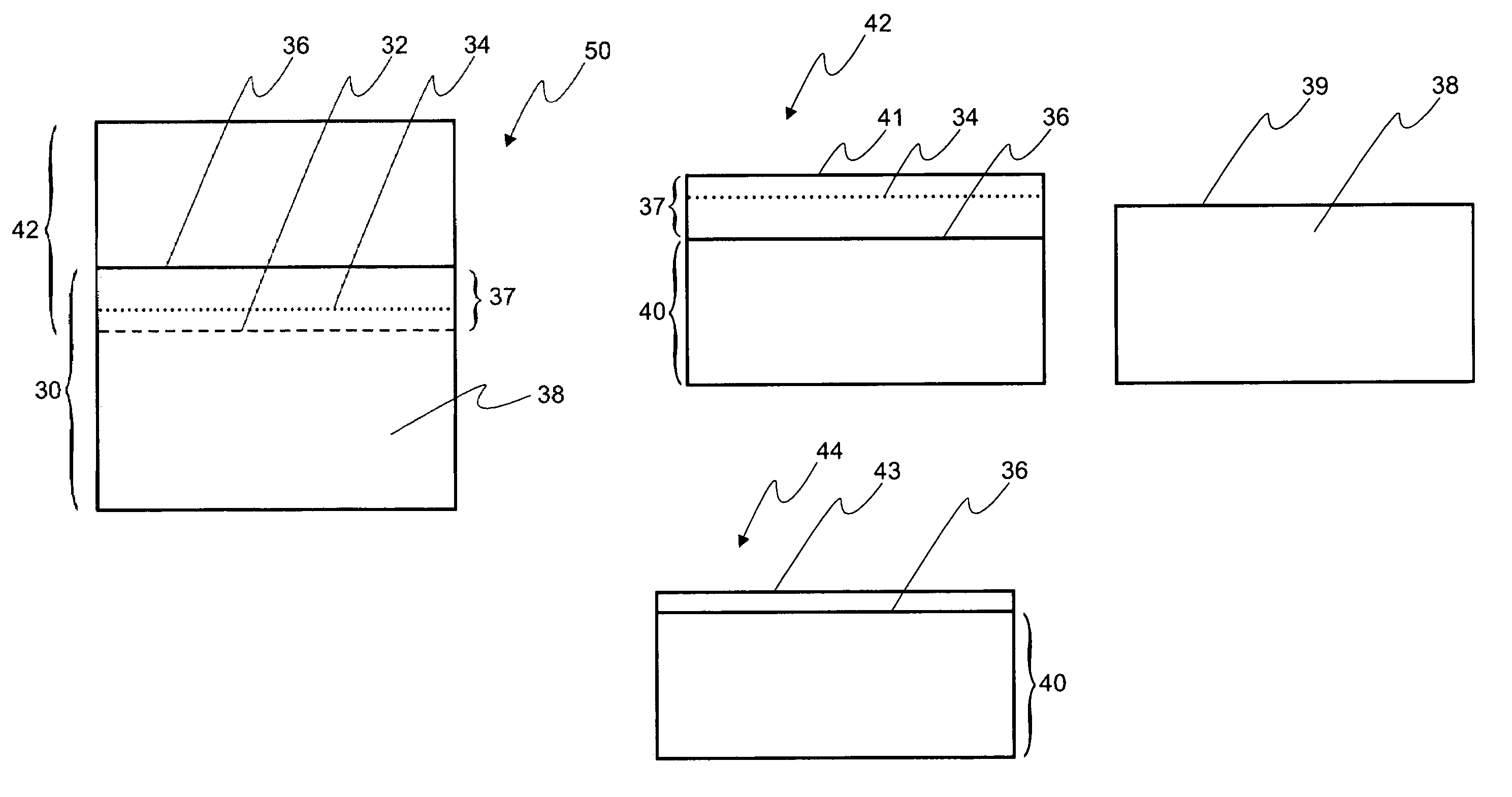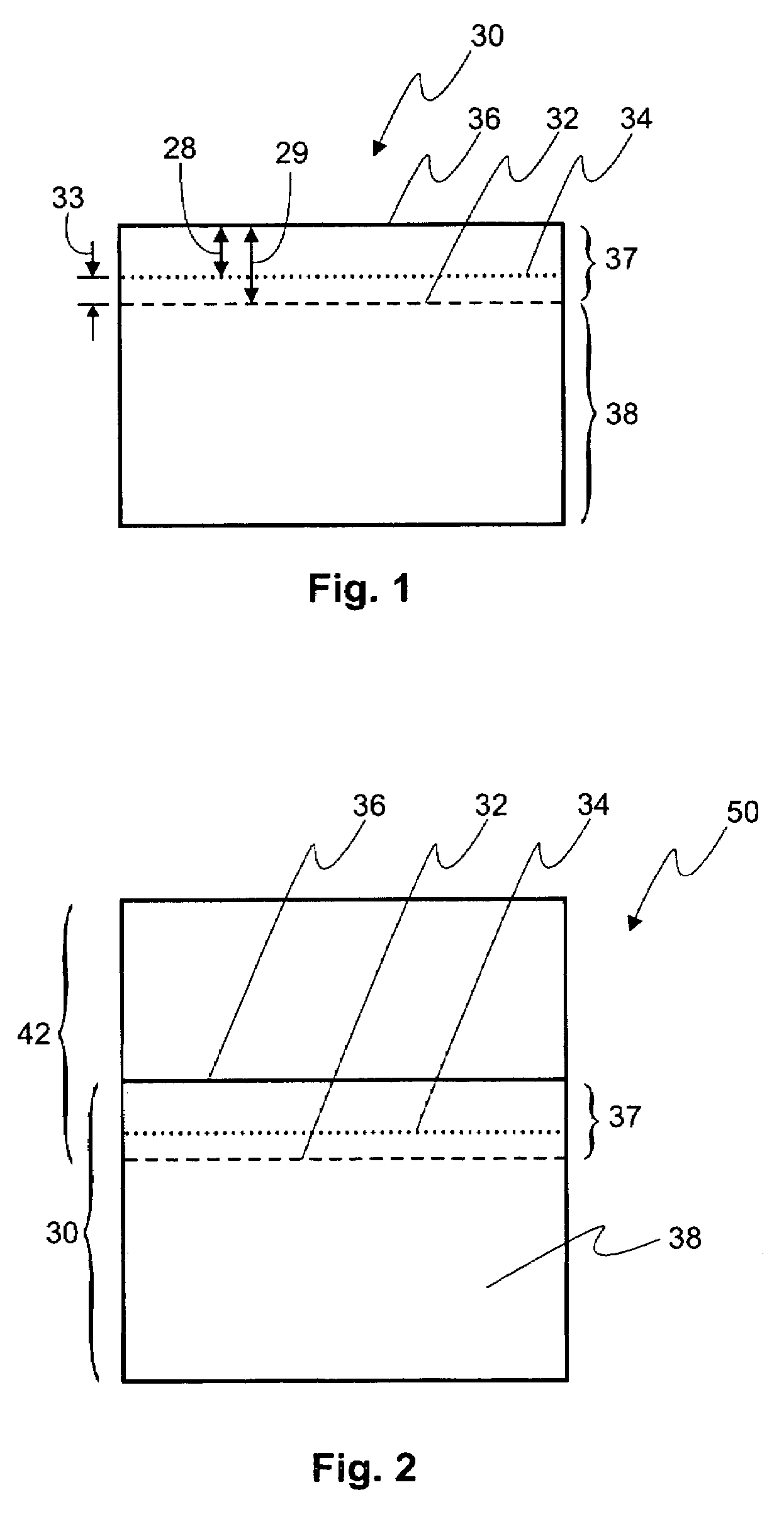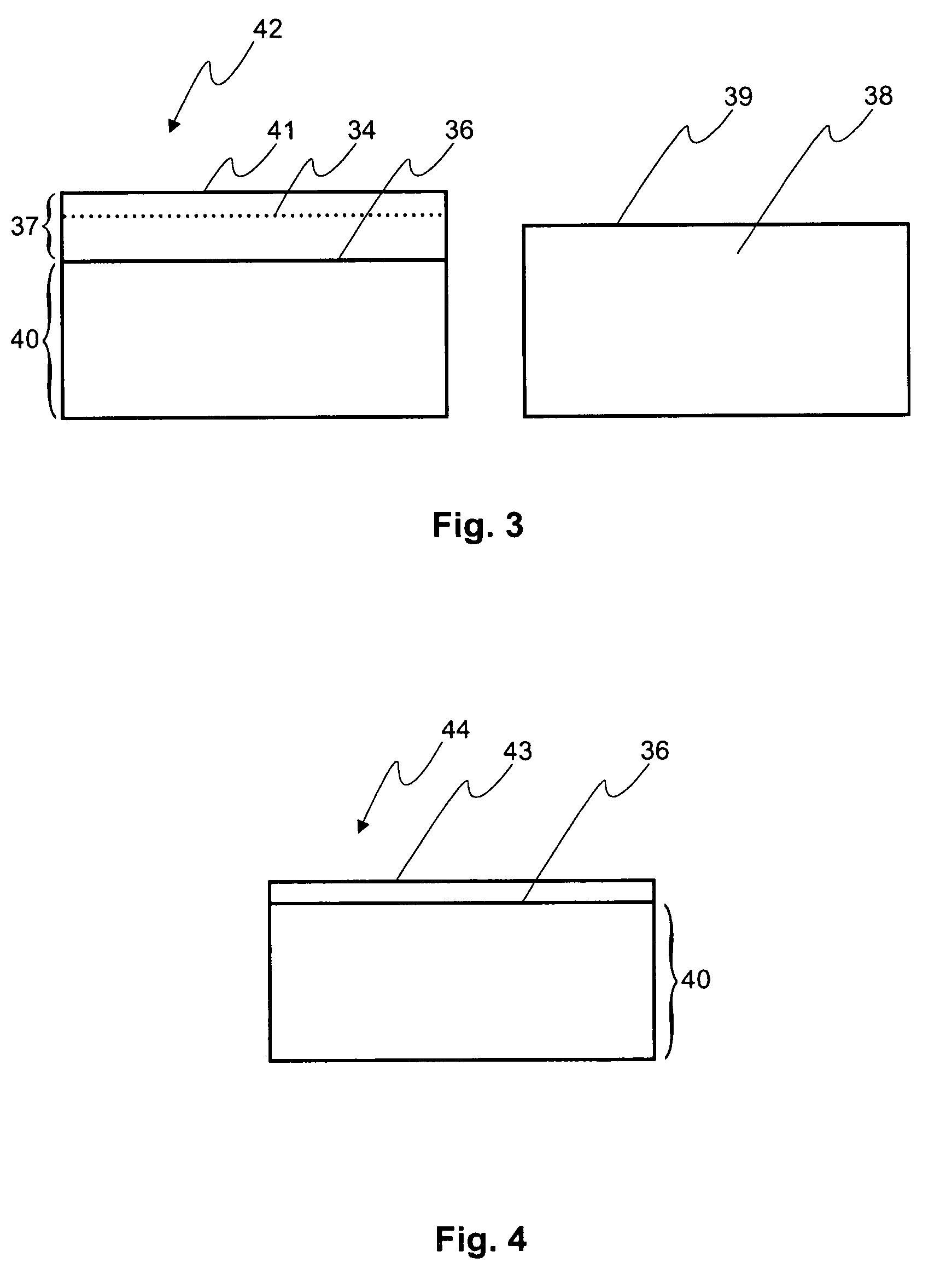Method of layer transfer comprising sequential implantations of atomic species
a layer transfer and atomic species technology, applied in the field of crystalline wafers, can solve the problems of requiring implantation time, blisters tend to form at the bonded interface, and require a long time to implantation, and achieve the effects of low surface roughness, limited blister formation, and optimal thickness uniformity
- Summary
- Abstract
- Description
- Claims
- Application Information
AI Technical Summary
Benefits of technology
Problems solved by technology
Method used
Image
Examples
example 1
[0053]A first structure S1 and a second structure S2 were produced and compared with respect to the amount of blister formation observed at each respective bonded interface and the resulting surface roughnesses. A region of weakness was formed in the first structure S1 by implanting only a co-implantation of helium and hydrogen species at implantation conditions that typically result in the formation of blisters, i.e., implanting both species at substantially the same depth within the donor substrate and implanting hydrogen species at a relatively low dose. Helium species were implanted with an implantation energy of 49 keV and a dose of 1.5×1016 / cm2, and hydrogen species were implanted with an implantation energy of 32 keV and a dose of 1×1016 / cm2.
[0054]The second structure S2 was produced according to a preferred embodiment of the present invention. The implantation of atomic species preferably included an initial co-implantation operation to form a region of weakness in the secon...
example 2
[0060]An SOI structure S3 having a thin layer of buried oxide was produced by oxidizing a silicon substrate to form a superficial oxide layer thereon having a thickness of 200 angstroms. The SOI structure S3 was then subjected to an initial implantation operation of hydrogen species only with an implantation energy of 37 keV and at a dose of 5×1016 / cm2. A subsequent implantation operation of argon species only was performed with an implantation energy of 200 keV and at a dose of 5×1014 / cm2.
[0061]Table 2 details the implantation conditions for producing SOI structure S3.
[0062]
TABLE 2S3First implantation operation (H implantation) 37 keV5.1016 / cm2Second implantation operation (Ar implantation)200 keV5.1014 / cm2
[0063]After detachment, very few blisters were observed at the bonded interface of the SOI structure S3, and a 10×10 μm2 AFM scan revealed a surface roughness of about 60 angstroms RMS. The SOI structure S3 was then subjected to an annealing treatment, and a subsequent 10×10 μm2 ...
PUM
 Login to View More
Login to View More Abstract
Description
Claims
Application Information
 Login to View More
Login to View More - R&D
- Intellectual Property
- Life Sciences
- Materials
- Tech Scout
- Unparalleled Data Quality
- Higher Quality Content
- 60% Fewer Hallucinations
Browse by: Latest US Patents, China's latest patents, Technical Efficacy Thesaurus, Application Domain, Technology Topic, Popular Technical Reports.
© 2025 PatSnap. All rights reserved.Legal|Privacy policy|Modern Slavery Act Transparency Statement|Sitemap|About US| Contact US: help@patsnap.com



